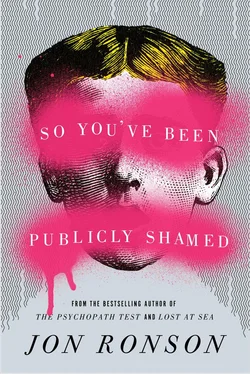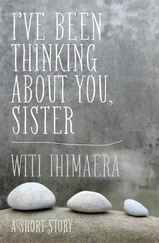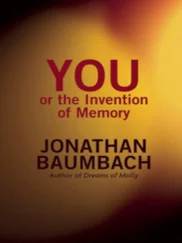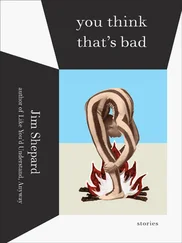Inmates were swallowing razor blades and blinding and castrating themselves and each other. A U.S. District Court judge, W. Arthur Garrity, ordered the Department of Corrections to make sense of the chaos by bringing in a team of investigative psychiatrists. Gilligan was invited to lead the group. He agreed, but he wasn’t enthusiastic. He assumed the perpetrators of the prison violence would be psychopaths.
“I’d been taught that psychopaths had just been born that way,” he said, “and that they’d only want to manipulate you so you’d get them a reduced sentence.”
He pictured them like they were another species. And that’s exactly how they seemed to him when he first went inside the Bridgewater State Hospital for the criminally insane.
“One of the first men I met had been a pimp in a slum area of Boston,” Gilligan said. “He killed some of his girls, and he killed other people. He killed several people in the community before he was finally arrested. So they put him in the Charles Street jail to await trial. And he promptly killed one of the inmates there. So they said, ‘He’s too violent to await trial in the jail. We have to send him to Walpole’—the maximum-security prison. And he killed someone there . And that’s when I met him. He looked like a zombie. He was mute, rather paranoid, not overtly psychotic but literally abnormal. Everybody was scared to death of him. I thought, This guy’s untreatable. But we needed to keep people safe. So we put him in a locked dormitory building, and during the day, I told the staff, ‘Keep an invisible wall around him. Keep six feet away from him. Don’t crowd him. If you crowd him, you might get injured.’”
And that’s how things remained for a while. But eventually the man — and other men like him — loosened up a little to Gilligan. And what they told him came as a great surprise to him.
“The men would all say that they had died,” Gilligan said. “These were the most incorrigibly violent characters. They would all say that they themselves had died before they started killing other people. What they meant was that their personalities had died. They felt dead inside. They had no capacity for feelings. No emotional feelings. Or even physical feelings. So some would cut themselves. Or they would mutilate themselves in the most horrible ways. Not because they felt guilty — this wasn’t a penance for their sins — but because they wanted to see if they had feelings. They found their inner numbness more tormenting than even the physical pain would be.”
Gilligan filled notepads with observations from his interviews with the men. He wrote, “Some have told me that they feel like robots or zombies, that their bodies are empty or filled with straw, not flesh and blood, that instead of having veins and nerves they have ropes or cords. One inmate told me he feels like ‘food that is decomposing.’ These men’s souls did not just die. They have dead souls because their souls were murdered. How did it happen? How were they murdered?”
This was, Gilligan felt, the mystery he’d been invited inside Massachusetts’s prisons and mental hospitals to solve.
And one day it hit him. “Universal among the violent criminals was the fact that they were keeping a secret,” Gilligan wrote. “A central secret. And that secret was that they felt ashamed — deeply ashamed, chronically ashamed, acutely ashamed.” It was shame, every time. “I have yet to see a serious act of violence that was not provoked by the experience of feeling shamed or humiliated, disrespected and ridiculed. As children, these men were shot, axed, scalded, beaten, strangled, tortured, drugged, starved, suffocated, set on fire, thrown out of the window, raped, or prostituted by mothers who were their pimps. For others, words alone shamed and rejected, insulted and humiliated, dishonored and disgraced, tore down their self-esteem, and murdered their soul.” For each of them the shaming “occurred on a scale so extreme, so bizarre, and so frequent that one cannot fail to see that the men who occupy the extreme end of the continuum of violent behavior in adulthood occupied an equally extreme end of the continuum of violent child abuse earlier in life.”
So they grew up and—“all violence being a person’s attempt to replace shame with self-esteem”—they murdered people. One inmate told him, “You wouldn’t believe how much respect you get when you have a gun pointed at some dude’s face.” Gilligan said, “For men who have lived for a lifetime on a diet of contempt and disdain, the temptation to gain instant respect in this way can be worth far more than the cost of going to prison or even of dying.”
And after they were jailed, things only got worse. At Walpole — Massachusetts’s most riot-prone prison during the 1970s — officers intentionally flooded the cells and put insects in the prisoners’ food. They forced inmates to lie facedown before they were allowed meals. Sometimes officers would tell prisoners they had a visitor. Prisoners almost never had visitors, so this was exciting to hear. Then the officer would say that the prisoner didn’t really have a visitor and that he was just kidding. And so on.
“They thought these things would be how to get them to obey,” Gilligan told me. “But it did the exact opposite. It stimulated violence.”
“Literally, every killer told you this?” I asked. “That the feeling of shame was what led them to do it?”
“It amazed me how universal it was,” Gilligan replied. “Over decades.”
“What about that pimp from Boston?” I said. “What was his story?”
“His mother had thought he was possessed by the devil,” Gilligan said, “so she did voodoo ceremonies and exorcisms in this totally black basement and he was scared to death. He’d shit his pants. He certainly was not loved in any normal sense. His mother had given him this negative identity — that Satan was inside him — so he behaved accordingly.” Gilligan paused. “It took some of them a while to confess it to me. It’s shameful to have to admit you feel ashamed. By the way, we’re saying the word feeling . The feeling of shame. I think feeling is the wrong word.”
It may be somewhat paradoxical to refer to shame as a “feeling,” for while shame is initially painful, constant shaming leads to a deadening of feeling. Shame, like cold, is, in essence, the absence of warmth. And when it reaches overwhelming intensity, shame is experienced, like cold, as a feeling of numbness and deadness. [In Dante’s Inferno ] the lowest circle of hell was a region not of flames, but of ice — absolute coldness.
— JAMES GILLIGAN, Violence: Reflections on Our Deadliest Epidemic
“And finally it struck me,” Gilligan said to me. “Our language tells us this. One of the words we use for overwhelming shame is mortification . ‘I’m mortified.’”
• • •
T heir bodies are empty or filled with straw, not flesh and blood… Instead of having veins and nerves they have ropes or cords.
As Gilligan had said this to me, I remembered a moment from Jonah Lehrer’s annihilation. It was when he was standing in front of that giant-screen Twitter feed trying to apologize. Jonah is the sort of person who finds displays of emotion extremely embarrassing, and he then looked deeply uncomfortable.
“I hope that when I tell my young daughter the same story I’ve just told you,” he was saying, “I will be a better person…”
“He is tainted as a writer forever,” replied the tweets. “He has not proven that he is capable of feeling shame.” “Jonah Lehrer is a friggin’ sociopath.”
—
Later, when Jonah and I talked about that moment, he told me he had to “turn off some emotional switch in me. I think I had to shut down.”
Читать дальше












